NORTH SEA FARM #1
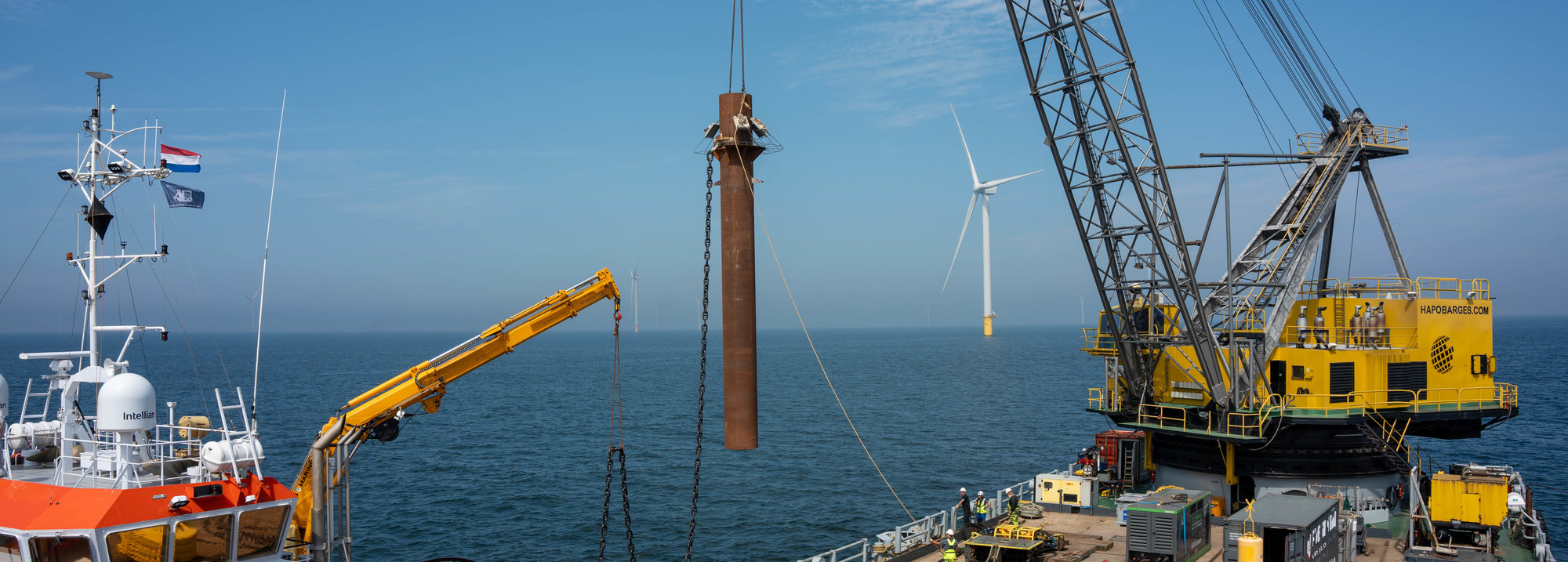
First commercial demonstration of a seaweed Farm within an offshore wind farm
In collaboration with Simply Blue Group, Van Oord, Algaia, and Amazon, we opened the world’s first commercial-scale seaweed farm within the offshore wind farm ‘Hollandse Kust Zuid’ (HKZ), located about 18 kilometres off the coast of Scheveningen in the North Sea. North Sea Farm #1 initiated by North Sea Farmers with funding from Amazon’s Right Now Climate Fund, is a floating farm located in the open space between wind turbines where seaweed production can be tested and improved. In parallel, scientific research aims to validate the carbon sequestration potential of seaweed farms and measure biodiversity impacts.
In the North Sea, offshore seaweed cultivation has only be done in the form of research pilots. But to understand what makes a viable and scalable business model and what the impacts are on the environment, North Sea Farmers (NSF) is going to start a commercially operated seaweed farm including the onshore processing activities.
PURPOSES
1. Show that seaweed farming between offshore wind turbines is technically feasible
Demonstrate that in challenging conditions within an offshore wind farm (proximity to wind farm, distance to the coast, depth, wind, waves, current, environmental and safety) it is possible to operate a commercially viable seaweed farm. The project will develop a seaweed production systems that are safe, robust, efficient and have high yields. Engineered with the best design codes and using all of the experience within the North Sea Farmers network.
2. Demonstrate that the young European seaweed sector can organise itself
The European seaweed (cultivation) industry is still young. Nevertheless, it’s players are more than capable to setup functioning supply chains together with the traditional European players. This project is an unique opportunity for seaweed companies to develop and be part of a state-of-the-art supply chain which is crucial in the execution of a commercial sustainable value chain.
3. Confirm genuine interest from European markets in seaweed products
NSF#1 aims to show that it is possible to make products from locally and sustainably cultivated seaweeds. The harvested seaweed from NSF#1 will initially be used to make samples of food ingredients, packaging, clothing as well as ingredients for cosmetics (texturiser) and agriculture (biostimulant ingredient). With these proven concepts the seaweed sector can engage with the market.
4. Climate and environmental research objectives
More insights on how to tackle climate change by potentially sequestering and avoiding CO2 emissions. And gaining more insights on the possibilities to realize a net positive impact (NPI) on biodiversity.
5. Demonstrate the viability of co-use in offshore wind farms
If the ambition of the Ostend Declaration (development of a total capacity of 300 GW in wind farms in 2050 by nine countries with access to the North Sea) is realised, approximately 12% of the North Sea area will be occupied by wind farms. With respect to societal acceptance and perhaps even common sense It is clear that co-use of these areas is preferable. The NSF#1 aims to become the blueprint for how to implement co-use in wind farms successfully. This is not a plan, it has already started with the first offshore operations that provide valuable lessons learnt for future co-use initiatives.
Join The CONSORTIUM!
Become a partner of the NSF#1 project consortium
As a company:
- You will have first row seats in wind farm co-use and offshore seaweed production
- You will directly contribute to a more circular economy
- Scale-up European seaweed industry
- Validation of carbon sequestration
- You will obtain direct custom reporting
- Feasibility seaweed biomass for applications relevant for your markets
- Support on viable and state-of-the art co-use innovation solutions for wind farm tenders (if applicable)
- You will be involved in positive media exposure
In return we ask for a substantial financial or in-kind contribution
As a research project/ institute or university:
- You can perform research on the only operational co-use seaweed farm in a North Sea wind farm
- You will get direct access to the farm infrastructure and sensor/survey data
- You can place any sensor/survey equipment
- You can join any operational activity for your research goals
- You will be involved in positive media exposure
In return we ask for contributing (relevant) project resources to NSF#1 to support also others and share what you have learned with stakeholders
Current Consortium
For a successful realisation of this project (incl. research objectives), it is crucial to join forces. For that reason a consortium has been built that includes researchers Plymouth Marine Laboratory (PML) and Deltares, carbon sequestrtion advisors Silvestrum Climate Associates, seaweed extract manufacturer Algaia, project developer Simply Blue Group, and marine contractors Van Oord and Doggerland Offshore.

Amazon supports NSF#1 through its Right Now Climate Fund, which aims to promote sustainability and combat climate change.
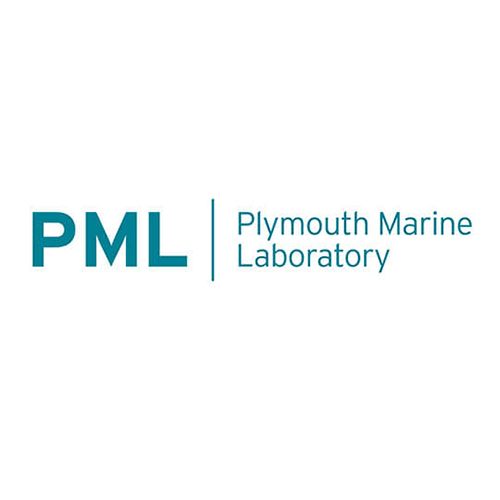
International Centre of Excellence in Marine Science and Technology delivering solutions for global change, sustainability and pollution, through national and international marine & coastal research. (UK)
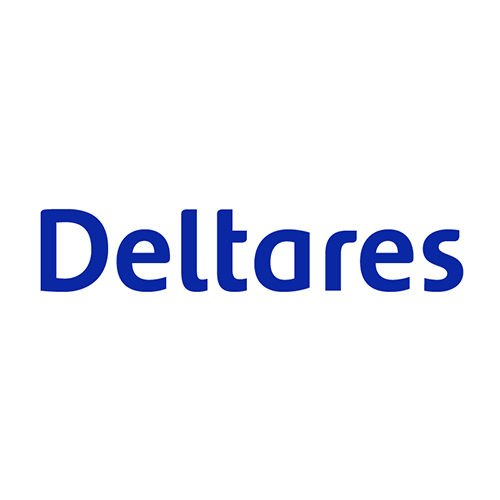
Deltares is an independent institute for applied research in the field of water and subsurface. Deltares is developing knowledge about the quality of soil and water systems, and making that knowledge available through model and information systems for policymakers, managers and users (NL).
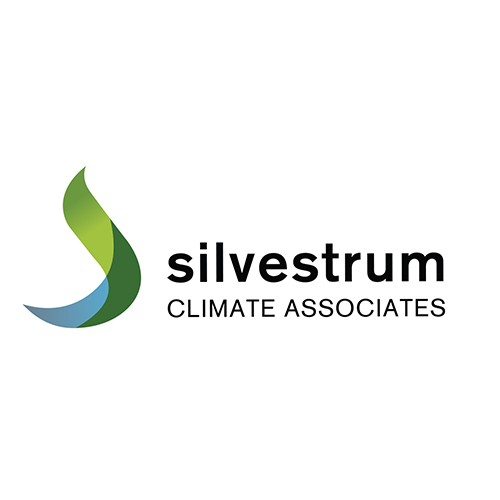
As innovators and long-time practitioners in climate adaptation, climate mitigation, climate change policy, and environmental science, we unite insights from successful projects and policies from across the world, combining cutting-edge research with decades of hands-on experience. (USA)
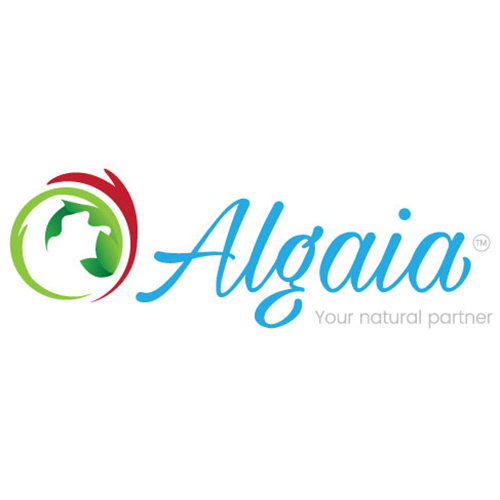
Algaia is a fast-growing biomarine ingredients company producing and marketing seaweed extracts for food, cosmetics, dietary supplements and agriculture. (NL)
Algaia will process the harvested seaweeds into ingredients.

Simply Blue Group, headquartered in Cork, Ireland, is a leading blue economy developer with a focus on replacing fossil fuels with clean ocean energy. It develops pioneering renewable energy projects both offshore and onshore –wind, sustainable fuels, marine energy, carbon dioxide removal and low-impact aquaculture – all in harmony with the oceans and the land. The company has a pipeline of over 10GW of offshore wind projects across the globe. With these projects, Simply Blue Group is committed to creating new economic opportunities for coastal communities, and developing projects that co-exist with sustainable fisheries and marine conservation.
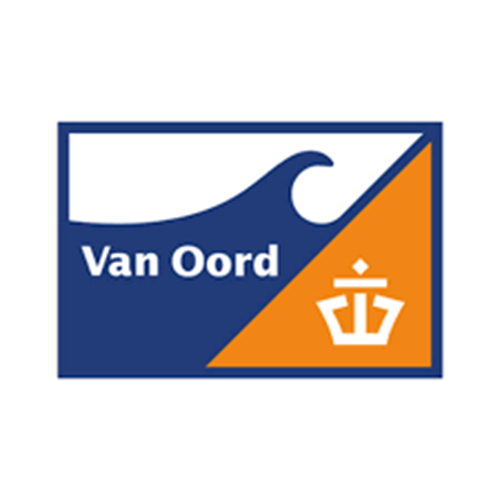
Van Oord is a Dutch family-owned company with over 150 years of experience as an international marine contractor. (NL)
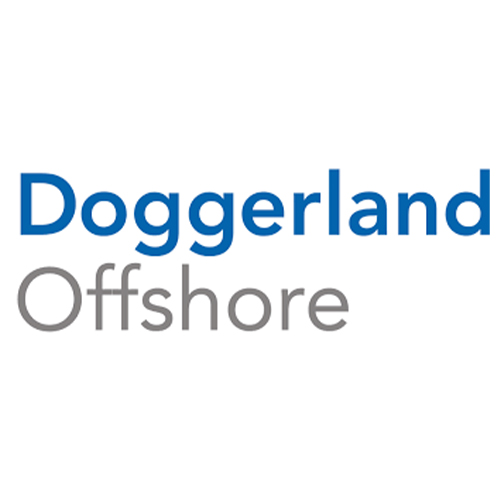
Doggerland is a marine contractor that specializes in offshore energy projects.

For North Sea Farm 1, North Sea Farmers will head up a consortium of partner organisations from across Europe that are involved in the entire seaweed production supply chain.
WIND FARM – HOLLANDSE KUST ZUID
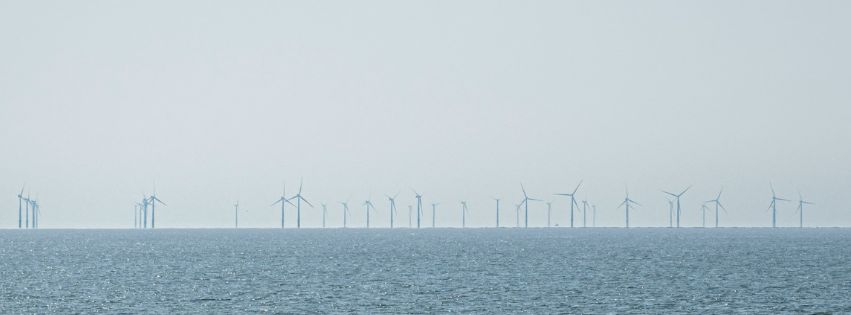
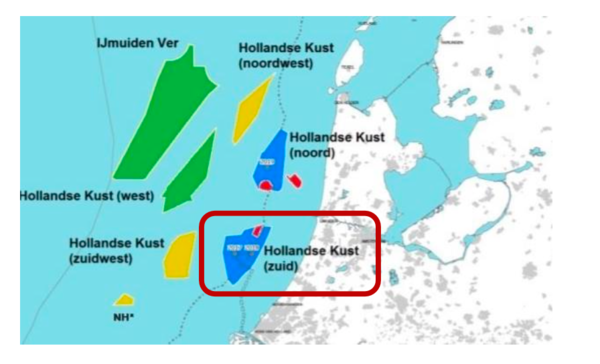
The seaweed farm is located within the wind farm Hollandse Kust Zuid IV, nearly 22 km of the coast of Scheveningen. The owners of this wind farm are: Vattenfall, BASF & Allianz.
The offshore wind farm consists of 139 turbines with a total capacity of 1.5GW. This equals the electricity needs of 1,5 million Dutch Households.
INSTALLATION
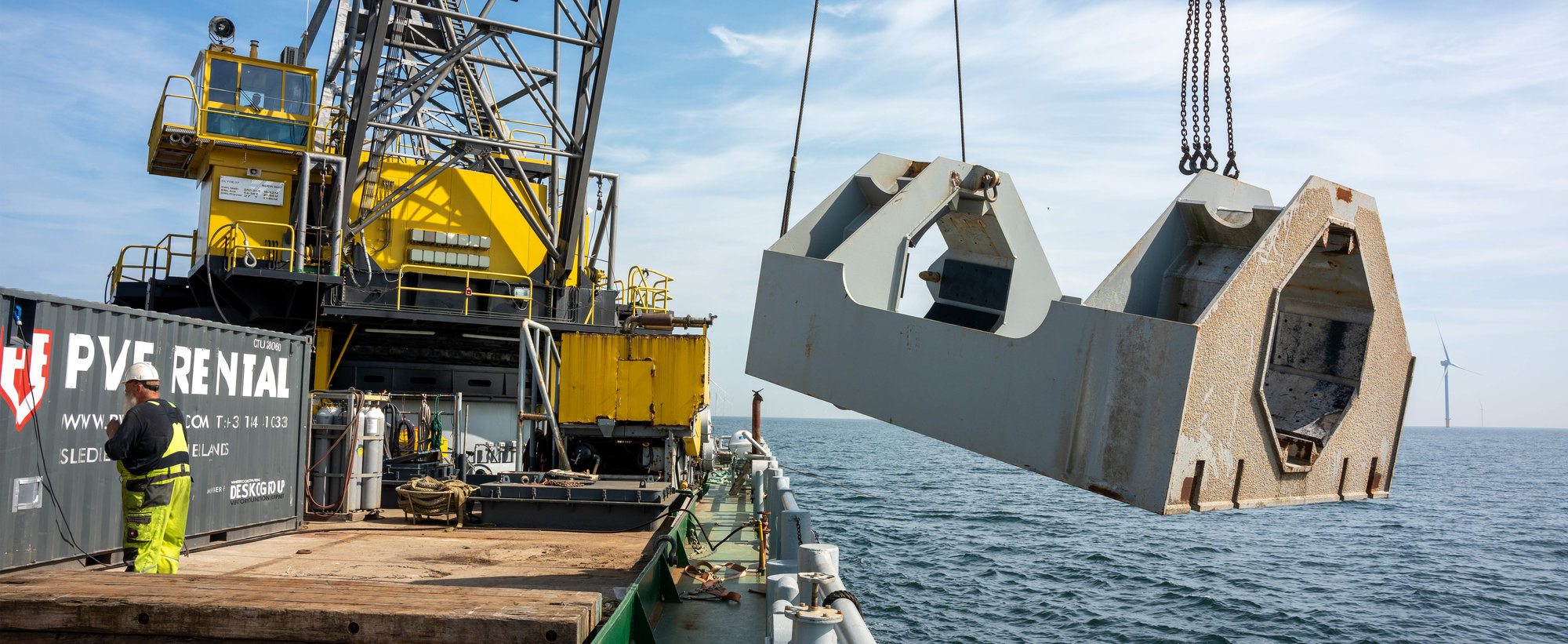
In this innovation phase the project starts with one seaweed production system that comprises 4 nets that float just below the water surface by means of floating pipes. This system stays in place thanks to its anchoring system with chains running down to 2 pile anchors, one on each side. These so-called eco- anchors have a special nature restoration feature that sticks 2m out of the seabed to provide shelter for all kinds of marine life.

The reserved area for one production system is 500 x 100 meters (5 ha.), with a predicted seaweed yield of 6.000 kg (wet weight). It’s the ambition for 2035 to scale-up to 400 production systems and with more efficient use of the available space this will lead to a total farm area of 1.000 ha (10 square kilometres) and a yield of at least 10.000 ton of seaweed (wet). Parts of the installation are already tested in the Offshore Test Site (OTS), the largest offshore test site in Europe, located 12km off the coast to The Hague.
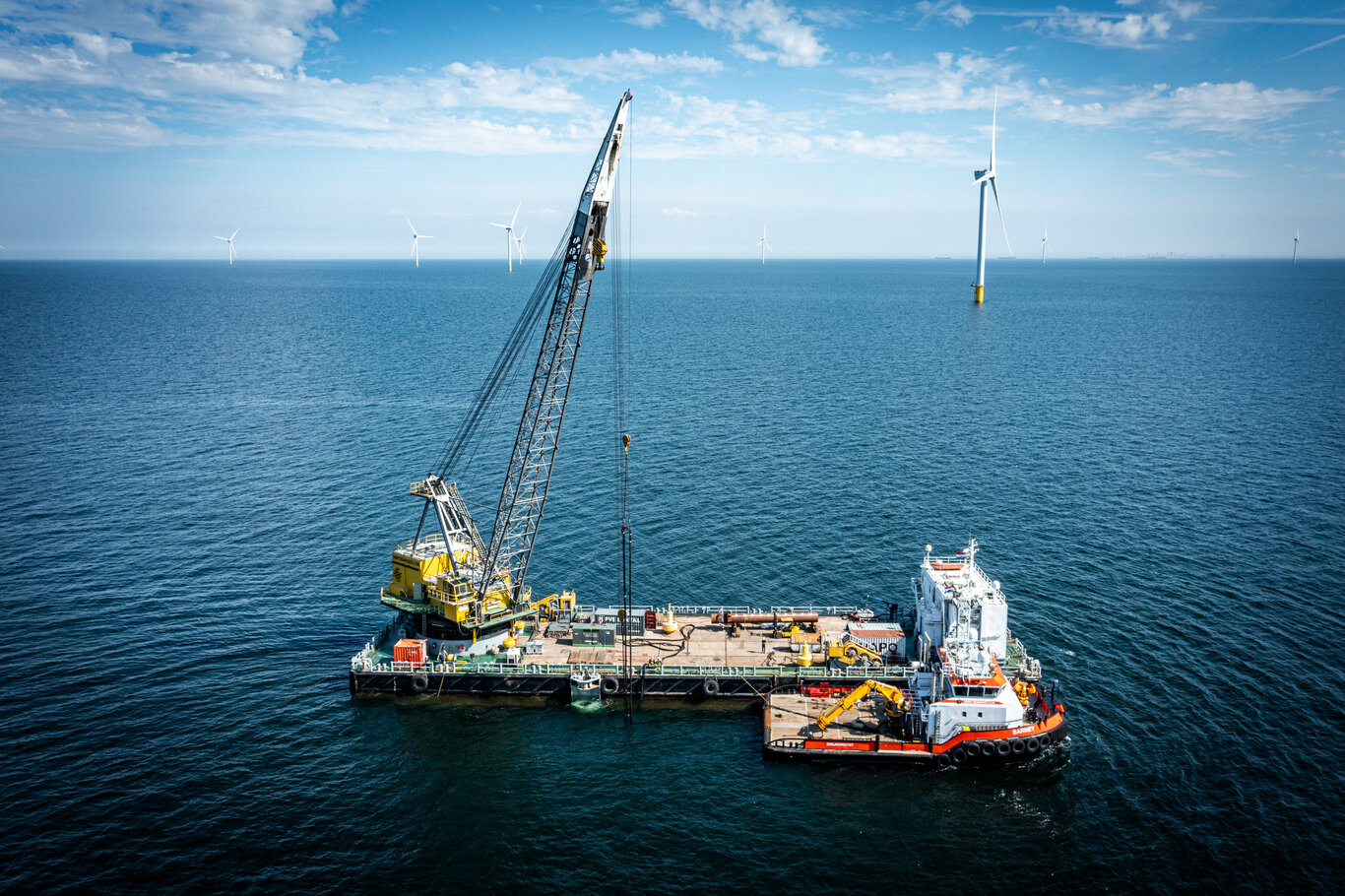
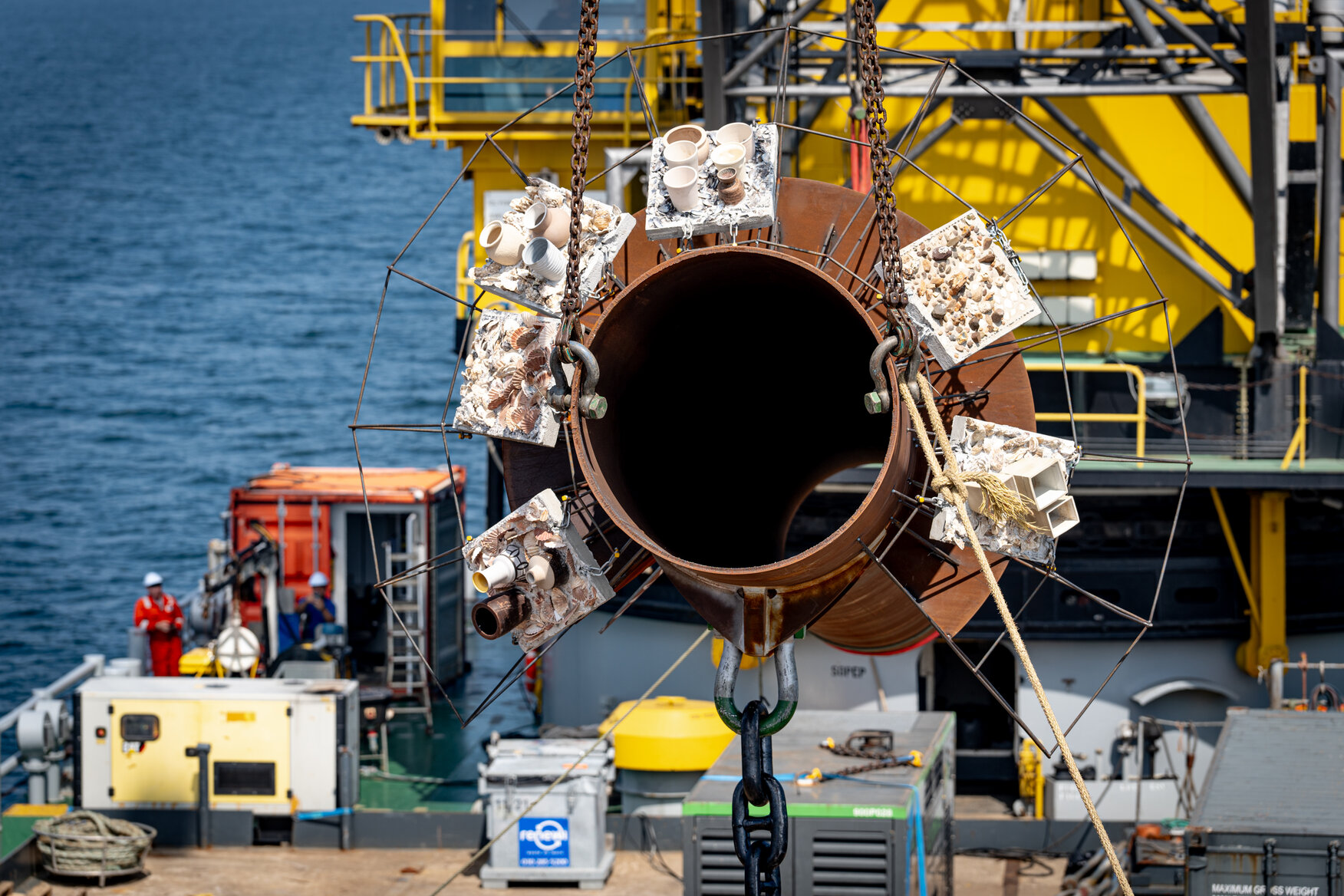 First phase: placement of Eco-anchors (13 meter piles with the top 2 mtr. covered with nature restoration substrate).
First phase: placement of Eco-anchors (13 meter piles with the top 2 mtr. covered with nature restoration substrate).
SCALABILITY

The area of wind farm Hollandse Kust Zuid is approximately 350 square kilometres and the total capacity of this wind farm is around 1,5 GW. In other words, the generation of one GW will require approximately 233 square kilometres of space. In light of the ambitious targets set out in the Oostend Declaration, which envisage the development of 300 GW of wind farm capacity by 2050, it is estimated that approximately 70,000 square kilometres of North Sea will be needed. The surface area of the North Sea is approximately 570.000 square kilometres1 so around 12% would then be covered by wind farms. With the assumption that of each offshore wind farm 10% will be dedicated to seaweed production, the scalability potential becomes 7.000 square kilometres of seaweed farms within wind parks. With the above provided data that 10 square kilometres will yield at least 10.000 ton, 7000 square kilometres will result in a yearly production of 7 million tonnes of fresh seaweed.
NATURE INCLUSIVITY
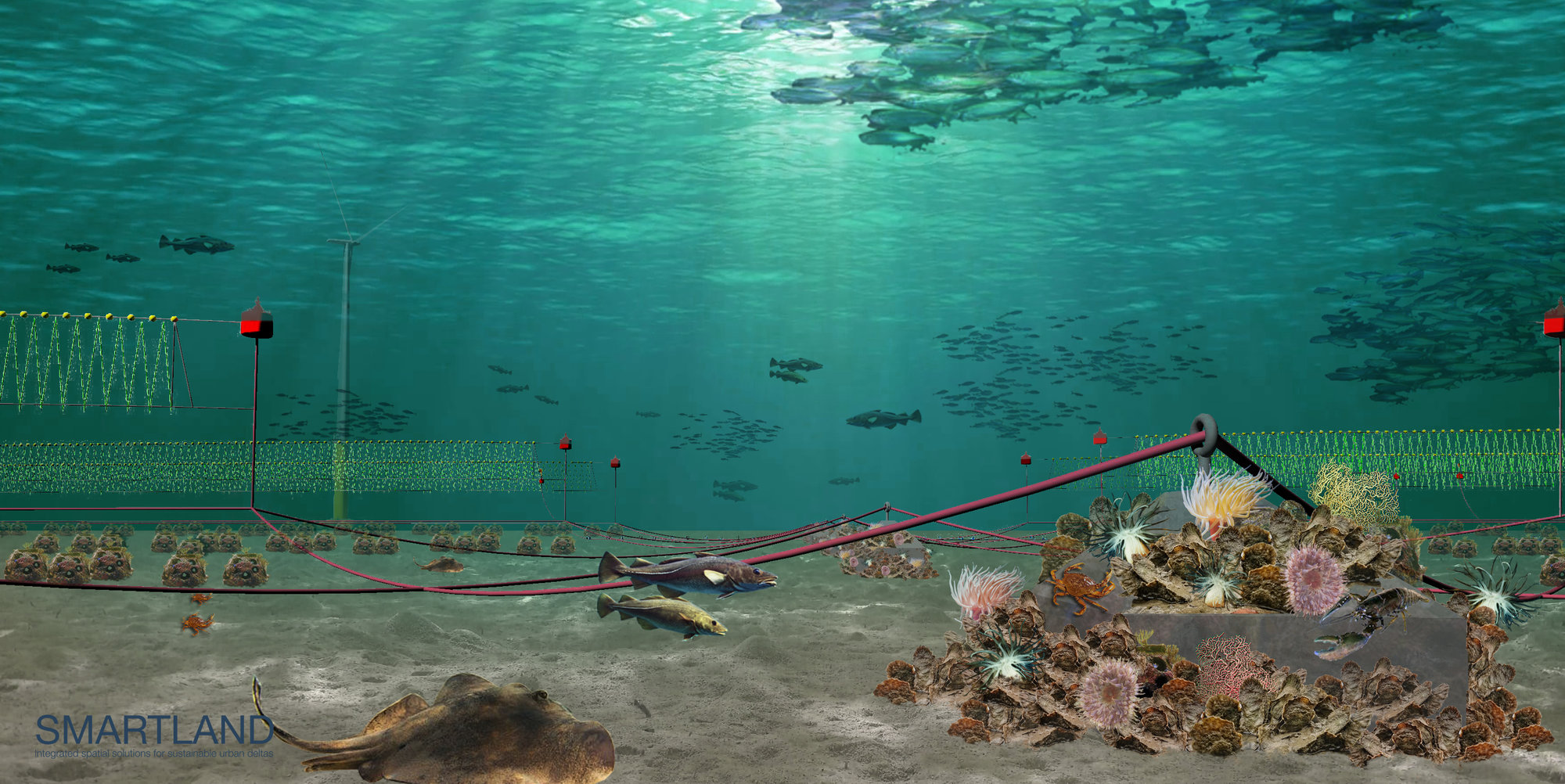
Artist’s Impression van een zeewierboerderij door Smartland Landscape Architecture.
It is vital that the future seaweed industry is nature-inclusive, operating in balance with the ecosystems both at sea and on land. Basically this means that each offshore seaweed farm must achieve net-zero impact on (marine) ecosystems. However, as NSF we believe the target to aim for should be net positive biodiversity gain. At this moment, further research is required to gain insights into ecological boundaries, such as the maximum amount of nutrients that can be extracted from the sea and the impact on marine life. Furthermore, it is important to consider the environmental opportunities that this presents. It is possible that seaweed farming could help to reduce eutrophication (too many nutrients in the sea), acidification due to high levels of absorbed CO2, or support marine life and biodiversity because seaweed farms form a food source, create habitat and provide shelter. This project will involve as many researchers and research projects as possible. The aim is to facilitate research based on in-situ measurements of the impacts and where possible improve existing environmental models to better inform policy makers and other stakeholders.
KEY SUCCES FACTOR

Seaweed is a highly promising sustainable raw material with significant potential for the future. However, the current limitations in scale and cost price make it challenging to develop an economically viable business model with European cultivated seaweed, even in promising markets in the short term (food, animal feed, biomaterials and biostimulants). For that reason the industry needs a (temporary) production subsidy for seaweed cultivators in Europe to remove or reduce the price difference with imported or wild-harvested seaweeds. This will make ingredients made from European cultivated seaweed cost competitive and will ensure uptake by European markets. At the same time it will make seaweed cultivation commercially viable. This will give it access to capital to scale, innovate and reduce the overall cost price. This model was also used to support the development of green energy project and has been crucial to the success of the (offshore) wind industry.